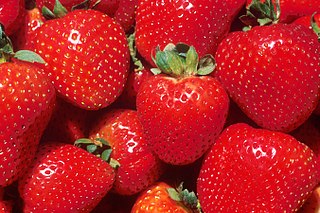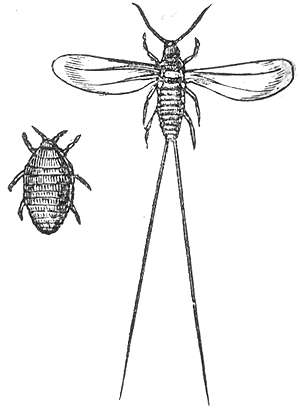
Red is the color at the long wavelength end of the visible spectrum of light, next to orange and opposite violet. It has a dominant wavelength of approximately 625–740 nanometres. It is a primary color in the RGB color model and a secondary color in the CMYK color model, and is the complementary color of cyan. Reds range from the brilliant yellow-tinged scarlet and vermillion to bluish-red crimson, and vary in shade from the pale red pink to the dark red burgundy.

A pigment is a powder used to add color or change visual appearance. Pigments are completely or nearly insoluble and chemically unreactive in water or another medium; in contrast, dyes are colored substances which are soluble or go into solution at some stage in their use. Dyes are often organic compounds whereas pigments are often inorganic. Pigments of prehistoric and historic value include ochre, charcoal, and lapis lazuli.
Crimson is a rich, deep red color, inclining to purple. It originally meant the color of the kermes dye produced from a scale insect, Kermes vermilio, but the name is now sometimes also used as a generic term for slightly bluish-red colors that are between red and rose. It is the national color of Nepal.
Carmine – also called cochineal, cochineal extract, crimson lake, or carmine lake – is a pigment of a bright-red color obtained from the aluminium complex derived from carminic acid. Specific code names for the pigment include natural red 4, C.I. 75470, or E120. Carmine is also a general term for a particularly deep-red color.
A lake pigment is a pigment made by precipitating a dye with an inert binder, or mordant, usually a metallic salt. Unlike vermilion, ultramarine, and other pigments made from ground minerals, lake pigments are organic. Manufacturers and suppliers to artists and industry frequently omit the lake designation in the name. Many lake pigments are fugitive because the dyes involved are not lightfast. Red lakes were particularly important in Renaissance and Baroque paintings; they were often used as translucent glazes to portray the colors of rich fabrics and draperies.

Vermilion is a color family and pigment most often used between antiquity and the 19th century from the powdered mineral cinnabar. It is synonymous with red orange, which often takes a modern form, but is 11% brighter.

Scale insects are small insects of the order Hemiptera, suborder Sternorrhyncha. Of dramatically variable appearance and extreme sexual dimorphism, they comprise the infraorder Coccomorpha which is considered a more convenient grouping than the superfamily Coccoidea due to taxonomic uncertainties. Adult females typically have soft bodies and no limbs, and are concealed underneath domed scales, extruding quantities of wax for protection. Some species are hermaphroditic, with a combined ovotestis instead of separate ovaries and testes. Males, in the species where they occur, have legs and sometimes wings, and resemble small flies. Scale insects are herbivores, piercing plant tissues with their mouthparts and remaining in one place, feeding on sap. The excess fluid they imbibe is secreted as honeydew on which sooty mold tends to grow. The insects often have a mutualistic relationship with ants, which feed on the honeydew and protect them from predators. There are about 8,000 described species.

Scarlet is a bright red color, sometimes with a slightly orange tinge. In the spectrum of visible light, and on the traditional color wheel, it is one-quarter of the way between red and orange, slightly less orange than vermilion.

Alchermes is a type of Italian liqueur prepared by infusing neutral spirits with sugar, cinnamon, cloves, nutmeg, and vanilla, and other herbs and flavoring agents. Its most striking characteristic is its scarlet color, obtained by the addition of Kermes, a small scale insect from which the drink derives its name. Several proprietary variants are commercially available, where the coloring agent is a coal tar-derived dye such as E124 or E126, with alcoholic contents ranging from 21 to 32%. Its chief use is in coloring pastry, although a quick dessert is sometimes made by adding it to custard cream and sugar. In the Italian pudding zuppa inglese, sponge cake or ladyfingers soaked in this liqueur are a major ingredient.

Quercus coccifera, the kermes oak, is an oak bush in the Ilex section of the genus. It has many synonyms, including Quercus calliprinos. It is native to the Mediterranean region and Northern African Maghreb, south to north from Morocco to France and west to east from Portugal to Cyprus and Turkey, crossing Spain, Italy, Libya, Balkans, and Greece, including Crete. The Kermes Oak was historically important as the food plant of Kermes scale insects, from which a red dye called crimson was obtained. The etymology of the specific name coccifera is related to the production of red cochineal (crimson) dye and derived from Latin coccum which was from Greek κόκκος, the kermes insect. The Latin -fera means 'bearer'.

Kermes is a red dye derived from the dried bodies of the females of a scale insect in the genus Kermes, primarily Kermes vermilio. The Kermes insects are native in the Mediterranean region and are parasites living on the sap of the host plant, the Kermes oak and the Palestine oak.

Kermes is a genus of scale insects in the order Hemiptera. They feed on the sap of oaks; the females produce a red dye, also called "kermes", that is the source of natural crimson. The word "kermes" is derived from Turkish qirmiz or kirmizi, "crimson", itself deriving from Persian *کرمست (*kermest) via Proto-Indo-Iranian *kŕ̥miš, from Proto-Indo-European *kʷŕ̥mis (“worm”).

Polish cochineal, also known as Polish carmine scales, is a scale insect formerly used to produce a crimson dye of the same name, colloquially known as "Saint John's blood". The larvae of P. polonica are sessile parasites living on the roots of various herbs – especially those of the perennial knawel – growing on the sandy soils of Central Europe and other parts of Eurasia. Before the development of aniline, alizarin, and other synthetic dyes, the insect was of great economic importance, although its use was in decline after the introduction of Mexican cochineal to Europe in the 16th century. Historically earlier was used Armenian cochineal scale insect, Porphyrophora hamelii, which is in a same taxonomic family Porphyrophora of the Polish cochineal and in different taxonomic family from cochineal found in the Americas.

The cochineal is a scale insect in the suborder Sternorrhyncha, from which the natural dye carmine is derived. A primarily sessile parasite native to tropical and subtropical South America through North America, this insect lives on cacti in the genus Opuntia, feeding on plant moisture and nutrients. The insects are found on the pads of prickly pear cacti, collected by brushing them off the plants, and dried.

Natural dyes are dyes or colorants derived from plants, invertebrates, or minerals. The majority of natural dyes are vegetable dyes from plant sources—roots, berries, bark, leaves, and wood—and other biological sources such as fungi.

Dyeing is the craft of imparting colors to textiles in loose fiber, yarn, cloth or garment form by treatment with a dye. Archaeologists have found evidence of textile dyeing with natural dyes dating back to the Neolithic period. In China, dyeing with plants, barks and insects has been traced back more than 5,000 years. Natural insect dyes such as Tyrian purple and kermes and plant-based dyes such as woad, indigo and madder were important elements of the economies of Asia and Europe until the discovery of man-made synthetic dyes in the mid-19th century. Synthetic dyes quickly superseded natural dyes for the large-scale commercial textile production enabled by the industrial revolution, but natural dyes remained in use by traditional cultures around the world.

Dactylopius is a genus of insect in the superfamily Coccoidea, the scale insects. It is the only genus in the family Dactylopiidae. These insects are known commonly as cochineals, a name that also specifically refers to the best-known species, the cochineal. The cochineal is an insect of economic and historical importance as a main source of the red dye carmine. It has reportedly been used for this purpose in the Americas since the 10th century. Genus Dactylopius is also important because several species have been used as agents of biological pest control, and because several are known as invasive species.

The Armenian cochineal, also known as the Ararat cochineal or Ararat scale, is a scale insect indigenous to the Ararat plain and Aras (Araks) River valley in the Armenian Highlands and in Turkey. It was formerly used to produce an eponymous crimson carmine dyestuff known in Armenia as vordan karmir and historically in Persia as kirmiz. The species is critically endangered within Armenia.

Red pigments are materials, usually made from minerals, used to create the red colors in painting and other arts. The color of red and other pigments is determined by the way it absorbs certain parts of the spectrum of visible light and reflects the others. The brilliant opaque red of vermillion, for example, results because vermillion reflects the major part of red light, but absorbs the blue, green and yellow parts of white light.















